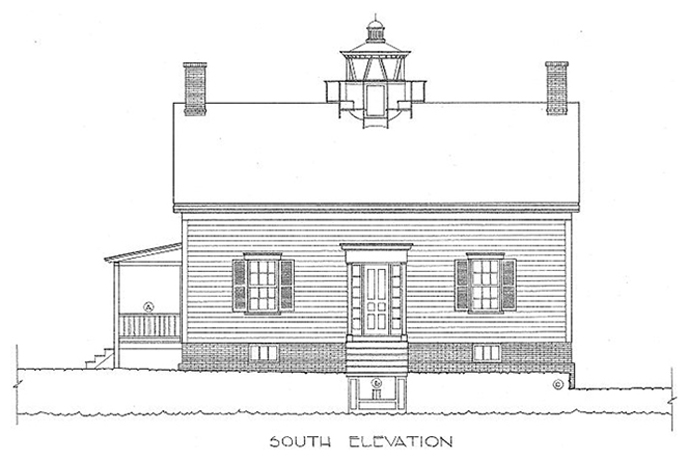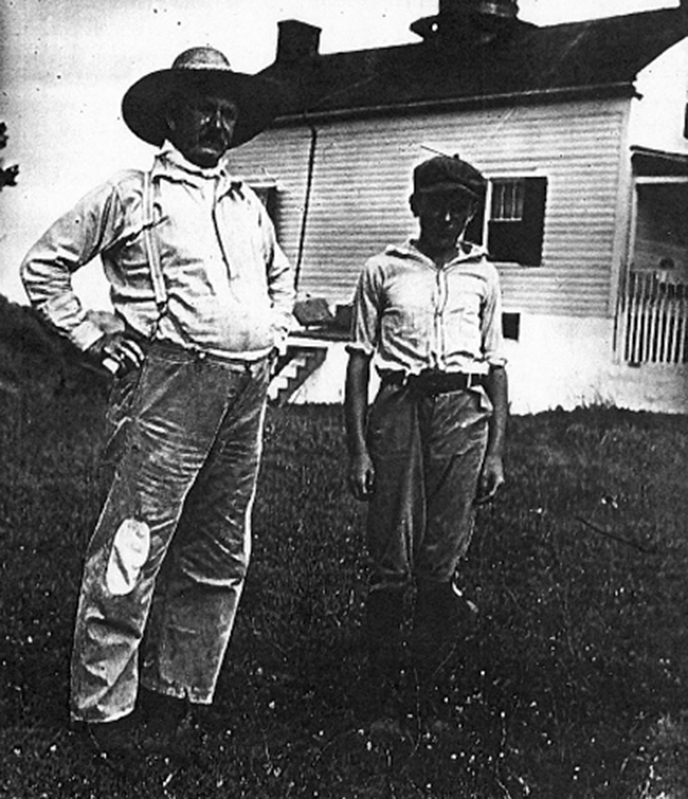Jones Point Lighthouse
|
The
Jones Point Lighthouse is one of the last riverine lighthouses in the
country and the only one still standing in the Chesapeake Bay area.
Today it is the focal point of Jones Point Park and a clue to area's
history as a busy commercial center and naval base.

The design of the Jones
Point lighthouse was very simple and similar to many residential houses
in the city of Alexandria. This helped the government complete its
construction quickly and cheaply. (blueprints 1963)
Library of Congress
Creation and Construction
The
lighthouse operated from 1856-1926. It was designed as a navigational
aid to help ships avoid shifting underwater shoals on the Potomac River
and to support the growing maritime economies of Alexandria, Virginia
and Washington, D.C. It had a fifth order Fresnel lens, the most
advanced lens technology available in the 1800s, and produced a light
beam which could be seen nine miles away. It was very useful to the
hundreds of merchant, passenger, fishing, and naval vessels that
traveled the Potomac each day.
Lighthouse Life
The
lighthouse usually had a keeper and an attendant appointed by the
president to ensure year round operation. The lighthouse employees had
many duties besides keeping the beacon lit 24 hours a day. They
maintained the building itself and kept records of shipping traffic,
weather, and tides. They worked long hours for low pay and rarely
traveled far from their station.
However,
keepers did get to live in the lighthouse for free. For unmarried
keepers, the four-room lighthouse provided plenty of space, but for men
with families the house could become very cramped. Benjamin Greenwood,
the longest serving keeper, lived with his second wife and 11 of his 14
children in the building at one point.
While
the lighthouse was physically separated from Alexandria in the 1800s,
the keeper and his family were never short of visitors. As the city
grew, its factories, rail yards, docks, and storehouses created a very
prosperous, but also very noisy, smelly, and congested industrial
center. The lighthouse's scenic shoreline made it a favorite recreation
spot for Alexandrians. People would visit Jones Point each weekend to
picnic, fish, swim, and relax along the banks of the Potomac.

Frank Wilkins, the last Jones Point Lighthouse keeper, and his son. (photo 1912)
Columbia Historical Society
Decommission and Salvation
In 1918 a massive shipyard was constructed at Jones Point to build ships for WWI. The
shipyard obscured the lighthouse's beacon light, making it less useful
as a navigational aid. In 1926 an automated light tower replaced the
manned lighthouse to cut costs. The lighthouse was deeded to the Mount
Vernon Chapter of the Daughters of the American Revolution (DAR). They
maintained the structure as a museum until 1936 when the Army Signal
Corps built a classified communication facility on the former shipyard
and closed it to the public. In 1953 the Army reopened Jones Point to
public entry, but significant damage to the lighthouse from weather,
tides, and vandalism had occurred. Soldiers had even used the building
for target practice during WWII.

By the late 1800s tides
had eroded the shore at Jones Point. The lighthouse was in danger of
being undermined and the cellar routinely flooded with the daily tides.
(photo 1929)
National Archives

After the Army allowed
the public to enter Jones Point again in 1953 the damage to the
lighthouse only accelerated. Vandals repeatedly defaced the building,
looted it for artifacts and materials, and even set fire to it. The DAR
chose to transfer the property back to the federal government to ensure
that the historic structure was not completely destroyed. (photo 1963)
Library of Congress
Lacking
money to repair the lighthouse, the DAR worked with the National Park
Service to establish a park on the site and restore the lighthouse. In
1964 Jones Point Park opened.
|
Did You Know?
 Arlington House was originally built as a memorial to George Washington. Construction bega
Arlington House was originally built as a memorial to George Washington. Construction bega



No comments:
Post a Comment